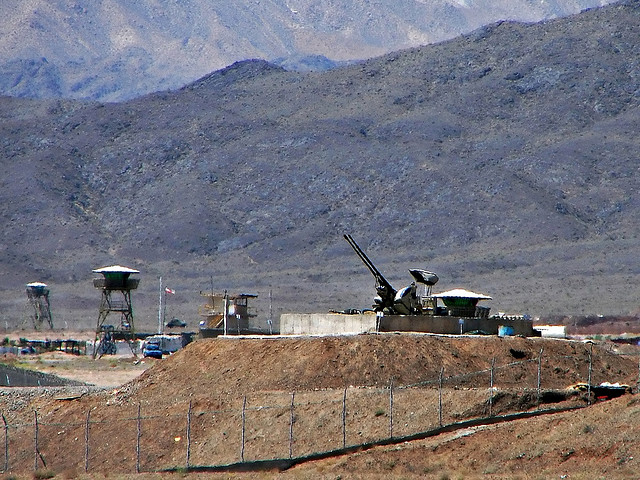
Natanz nuclear facility in Iran
When Stuxnet appeared in the wild last year, many suspected the attack to have been engineered by either the US or Israel, as the Iranian nuclear facilities are certainly a target for them, and the size and sophistication of the virus meant that it could only really have been done by a state. The lack of obvious monetary or “lulz” value from the virus also implied state involvement – but it was all guesswork until this week when Sanger has published quotes from many of those involved admitting their involvement in the production and distribution of the virus.
Stuxnet was part of something called Olympic Games, which is the name given more generally by the US to their cyber-warfare against Iran and was started by President Bush. One can only be impressed with the intricacies involved in developing such a weapon for sabotage – not only were earlier attacks needed to work out the exact design of Iran’s facilities, but they needed to bridge the “air gap” to even get started with Iran’s nuclear facilities cleverly unconnected from the internet. It seems people are simply not too clever about watching the security of their USB sticks across the world though.
Once the facilities were infected, the virus needed to hide itself from system security checks and then managed to either overspin or underspin the centrifuges causing them to break under stress all whilst reporting back to the Iranian grid that everything was working normally. It was certainly successful in causing chaos in the Iranian program as the regime blamed faulty technology, human error, and everything else under the sun for the problems – but couldn’t find the virus. People were fired, and Iran was certainly put back on its push towards nuclear “self-sufficiency”.
One key question that is explained by Sanger is the involvement of Israel in the development of this virus. Iran is obviously a major threat and enemy to Israel and they do have some of the expertise that was needed. But the reason the US involved Israel in the program was to avoid the possibility of Israel using military force to prevent the continuing development of Iran’s nuclear enrichment program – something which could have had grave consequences in the security and stability of a region already under stress from varyingly failed wars in Afghanistan and Iraq. The US did not want Israel dragging them into further military action in the area and to show they were preventing Iran continuing their enrichment program they needed to involve Israel in the program itself – and so far this has worked.
The only reason that anyone found this virus outside of the Iranian nuclear facilities was, in fact, down to some form of coding error. The virus most infected the laptop of a scientist or engineer working at the Natanz facility, and then did not realize its change in environment and replicated itself around the internet more generally once that person connected their laptop to the web at large. The US are blaming the error on Israel, but I would imagine Israel is blaming the US as well, albeit behind closed doors.
There is little doubt of the successes of this cyberwarfare against Iran, but there are some worrying implications that come out of this move by the US. Firstly, it will be very difficult for the US to claim any sort of moral superiority against China or other countries that attempt to hack US facilities as they have done in the past and will continue to do so in the future. More problematic, however, is the issue of collateral damage. The US and Israel developed a cyber-weapon that achieved their military objective – fine. But a coding error meant that it also infected millions of non-targets and caused havoc for some businesses – surely the US and Israeli governments should now be liable for damages to all the innocent and private citizens that they have affected?
Whatever the consequences now, it is official that we are in a time of cyberwarfare, where technical sabotage is often more useful than putting boots on the ground. Chalk this up as one more area in which we have finally gone digital.
(via New York Times)
(image courtesy of OpenDemocracy)



